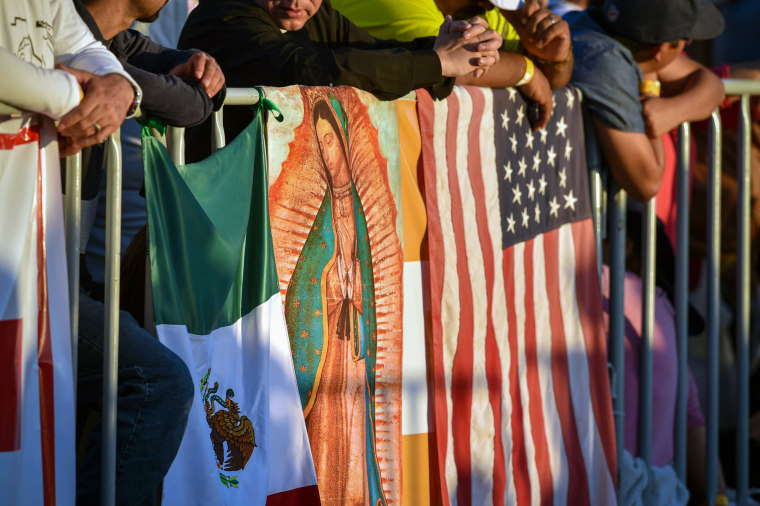“He has been able to name many of the realities, concerns, and hopes of Hispanic Catholics in the U.S.,” said Ospino, a native of Colombia. “He addressed issues related to immigration, to social justice, assimilation and evangelization — he was very intentionally attentive to how Hispanics are integrated into the life of the church.”
Olga Sarabia, a retired clinical social worker in Pasadena, California, said her parish had joined others around the globe since late February in special prayers for Francis.
“We were all concerned about our papa,” she said, using the Spanish word for pope.
“I loved him because he displayed an openness to all people … He elevated women, like he appointed a nun to a high office in the Vatican, which is unheard of,” Sarabia said. “I remember, when he first came in, he went and washed the feet of the prisoners in jail. This showed his character. He was a pope of the people.”
From his love of soccer — though he called himself a “patadura,” or bad soccer player — to his native Spanish language, the Argentine pope endeared himself to many who identified with his cultural heritage, warmth and compassion.
Acknowledging the traditions of Latino Catholics; he urged Mexicans last year to continue their devotion to Our Lady of Guadalupe, the Catholic saint and icon that’s a powerful symbol of Mexican identity.
In 2022, he celebrated a mass in Spanish at the Vatican, where he said that Our Lady of Guadalupe “came to accompany the American people on this hard road of poverty, exploitation, socio-economic and cultural colonialism” and that “she is our mother of mixed race.”
Pope Francis had two consistent messages, both of which resonated with many of his Hispanic followers, Ospino said. “One was his concern for those living in poverty; the poor have been at the center of his pontificate. He invited Catholics to be part of a church that was in service of the poor.”
“His second message, right from Day 1, was the plight of immigrants,” Ospino continued. “Francis was keen to the realities and struggles of immigrants in Europe, the Caribbean, the U.S. and Latin America. He will be remembered as the pope who brought and centered our attention on those who were poor, and on the migrant populations of the world.”

In 2019, on a trip to Central America, Pope Francis suggested that animosity toward migrants was driven by fear and “makes us crazy.” In 2022, he sympathized with migrant caravans trekking to the U.S.’s southern border seeking what he called “freedom and well-being.” In January 2025, he named a vocal ally of migrants to lead the Archdiocese of Washington.
More than four-in-ten U.S. Catholics are immigrants or children of immigrants, according to Pew Research data.
On migration, Pope Francis did not shy away from political controversies. He was a fierce critic of President Donald Trump’s immigration policies, saying on a 2016 visit to Mexico that “a person who only thinks about building walls, wherever they may be, and not building bridges, is not Christian. In January he called Trump’s plans for mass deportations “a disgrace.”
In a February letter to U.S. bishops, the pope criticized the criminalization of migrants and deportations, warning, “What is built on the basis of force, and not on the truth about the equal dignity of every human being, begins badly and will end badly.”


